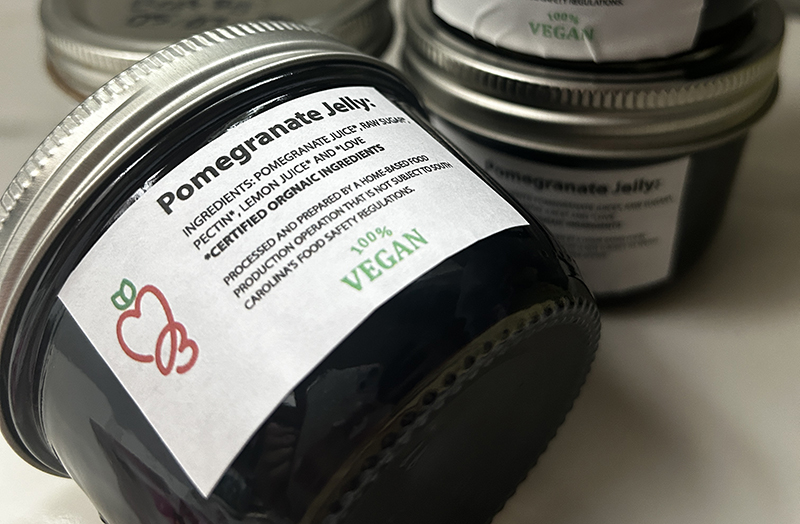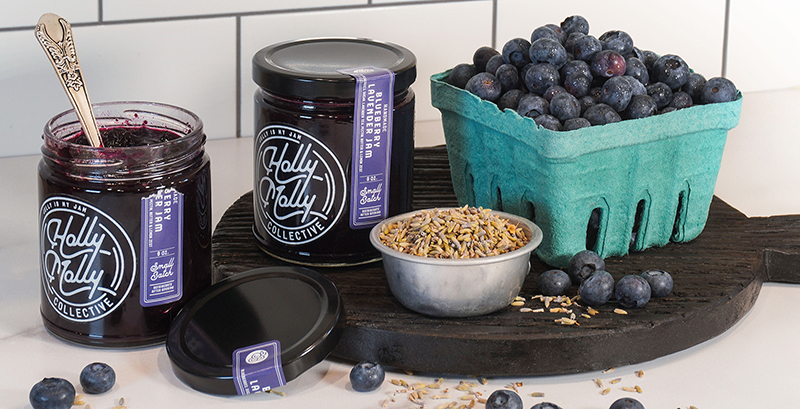Farmer's Market Products: Choosing Durable, Moisture-Resistant Label Materials
This entry was posted on July 23, 2025 .
Waterproof labels are essential for farmer's market products like jams, sauces, and pickles, anything that might face condensation, oil, or outdoor humidity.
Choosing the right label material protects your packaging and keeps branding sharp. For food-safe durability and charm, many brands use BOPP labels or rustic kraft paper styles. Canning labels are a great place to start.


Choose Label Materials That Can Brave the Booth
Farmer’s markets aren’t store shelves, they’re an unpredictable mix of sun, shade, damp air, coolers, and crowds. Labels get wet. Jars sweat. Hands are rarely clean. And your branding has to hold up through it all.
Here’s the challenge: Can your label survive a cooler full of melting ice, a drizzle at 9 a.m., and sticky peach syrup by noon? If not, you’re not just losing aesthetic points—you’re risking lost sales.
The secret most sellers don’t hear? Even the prettiest kraft paper label needs help if it’s going near moisture. That “handmade” charm can quickly become a smudged mess unless you choose materials designed to fight back.
Best Label Materials for Moisture-Resistance
White BOPP
White BOPP (biaxially oriented polypropylene) is one of the most popular materials for farmer’s market goods. It’s water-resistant, oil-resistant, and pairs well with both matte and gloss laminates for added durability and a clean finish.
Great for: Jams, sauces, bath products, and anything stored in a cooler.
Clear BOPP
Clear BOPP gives a “no label” look and lets your product shine through, perfect for clear glass jars or bottles. It’s also moisture-resistant and works well with gloss or matte lamination.
Great for: Infused oils, herbal syrups, and honey jars.


Chrome BOPP
Lightning Labels offers chrome BOPP with optional white ink underlays, allowing for metallic accents. It offers the same moisture and oil resistance as white or clear BOPP, with a bit more visual flair.
Great for: Specialty items like artisanal mustards or gourmet candies.
Kraft Paper Labels (with Laminate)
Kraft paper adds rustic charm and works well with dry goods or goods that won’t face refrigeration. Add a matte laminate for protection against light moisture or smudging.
Great for: Teas, cookies, dry rubs, or hand-wrapped soaps.
Textured Paper (with Laminate)
Lightning Labels offers Estate #9 Paper and other textured options that give an elegant, handcrafted look. These can be laminated to resist humidity and handling.
Great for: Wine bottles, baked goods, and upscale preserves.
Label Tips for Jars, Bottles, and Containers
- Glass jars: Use BOPP with laminate if refrigeration or ice packs are involved
- Plastic squeeze bottles: BOPP film conforms well to curves and won’t peel
- Mason jars: Kraft or Estate paper adds charm, laminate for moisture-prone setups
- Metal tins: Test adhesive strength, some coated tins may resist sticking without pressure-sensitive adhesives
Always test your label in typical booth and storage conditions before a large print run.


Quick Label Material Comparison
| Material | Moisture-Resistant | Lamination Option | Best For |
|---|---|---|---|
| White BOPP | Yes | Matte/Gloss | Jars, bottles, bath products |
| Clear BOPP | Yes | Matte/Gloss | Oils, syrups, clear containers |
| Chrome BOPP | Yes | Matte/Gloss | Premium goods, gift sets |
| Kraft Paper | No (laminate to resist) | Yes | Teas, soaps, dry goods |
| Estate #9 Paper | No (laminate to resist) | Yes | Wine, baked goods, preserves |
Before You Print Your First Batch
Don’t skip label testing, even seasoned sellers make adjustments after trying a new container or climate. Use this quick checklist:
- Test label adhesion on the exact container material
- Apply a few and store in coolers, fridges, or sunlight for 24–48 hours
- Check for curling, peeling, ink smudging, or fading
- Adjust lamination or label stock before committing to a large run
Summer Labeling Tips for Outdoor Markets
Warm weather brings out the crowds, and extra challenges for packaging. A few practical tweaks can make a big difference:
- Keep extra labels stored out of direct sunlight
- Use matte lamination to cut down glare in product photos
- Apply labels in shade or indoors for better adhesive performance
- Avoid uncoated paper on anything exposed to moisture or coolers
Helpful Tip: Mix and Match
Some brands use white BOPP on the front for the logo and visuals, then laminated kraft on the back for ingredients or storytelling. It’s a smart way to combine durability and handcrafted appeal.
Tips for pulling this off:
- Use clear label placement guides so your front and back align properly
- Keep branding consistent across both materials with matching inks and finishes
- Use kraft for storytelling blurbs, batch numbers, or QR codes
- Test how both materials behave under light, condensation, and cooler storage
Get Started with Waterproof Canning Labels
If your labels need to hold up against humidity, coolers, or the occasional sticky spill, it's worth checking out waterproof options that are built for the booth. Lightning Labels offers a variety of water-resistant labels suited for handmade goods, especially items like sauces, pickles, and jams that tend to sweat or drip.
FAQs About Jam Jar and Sauce Bottle Labels
What labels work best on jam jars at farmer's markets?
White or clear BOPP labels with laminate are ideal—they’re waterproof, durable, and stick well to glass.
Are kraft paper labels waterproof?
Not by default. Kraft labels can be laminated to improve moisture resistance, but uncoated kraft paper will absorb water and wrinkle.
Will condensation ruin my sauce bottle labels?
If you use uncoated paper labels, yes. Condensation can cause ink to run or labels to peel. Use BOPP or laminated labels for refrigerated or ice-packed items.
How do I label products stored in coolers or fridges?
Choose waterproof label materials like white BOPP, clear BOPP, or chrome BOPP—all available with lamination for extra protection.
Can I print waterproof labels at home?
Most home printers can’t print directly on BOPP. You'll need label stock designed for inkjet/laser use or a commercial printer.
What’s the difference between BOPP and paper labels?
BOPP is moisture-resistant and durable, perfect for farmer’s markets. Paper can work if kept dry or protected with laminate.
Are laminated paper labels food-safe?
Yes, when printed with food-safe inks and used on non-edible surfaces like jars or packaging. Confirm specifications with your printer.

 Custom Labels
Custom Labels  Custom Beverage Labels
Custom Beverage Labels  Custom Lip Balm Labels
Custom Lip Balm Labels  Custom Warning & Safety Labels
Custom Warning & Safety Labels  Perfume Bottle Labels
Perfume Bottle Labels  Bumper Stickers
Bumper Stickers  Custom Prop 65 Warning Labels
Custom Prop 65 Warning Labels  Custom Stickers
Custom Stickers